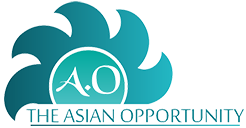A Case Study: The Definition of Quality in Asian Markets
Singapore is a very modern and westernised country with similar views to us when it comes to the definition of quality. Compared to other countries in South East Asia, they are economically well off, and therefore their standards are higher. Conversely, there are other countries in Asia where the definition could not be more different than what we expect in our home country.
If we can understand that people differ when it comes to definition of quality in food and wine, why is it so hard for many to wrap their arms around the idea that the definition of quality when it comes to products and services will vary from country to country?
An experience I had when I lived and worked in Indonesia was great example of this. Despite living and working in Jakarta, I travelled all over the country as part of my marketing and business development role with an Australian building products business. When I flew into the city of Medan in North Sumatra, I could not help notice how all of the roofs of the local houses seemed to be low-quality sheet metal as they were rusted red in colour. It seemed like this would be a natural market for us with rust-resistant steel roofing, since many cities throughout the region had similar, rusted roofs.
The metal roofing the local residents were using was galvanized iron sheet. It was made of cheap, thin metal with a low coating mass with an average life of only 18 months. Yes, residents had to replace their roofs every few years, but that was just what they did. My company had never gone after the residential roofing market in Indonesia because we were focused on industrial, commercial roofing where quality and long life of roofing product was more valued.
I was very keen to have a crack at this market because of the large volumes. However I realised that we needed to develop a steel roofing product that would last approximately five years, versus the 18 months the local residents were used to. A roof that lasted five years would be seen as quality product in the North Sumatran residential roofing market.
I knew there would be some issues because, up to that point, all of the coated steel that we supplied in Australia and globally (including Asia) was a high quality, long-lasting product with a life of at least 25 years because of it superior coating mass and steel thickness.
I explained to the company executives back in Australia that what we had been supplying was over-specified for the residential roof market in Medan. I needed something that was cheaper so we could compete on price and would last about five years. The response was, “That is not a quality product!” I was really annoyed with this response and the overall lack of understanding of the market dynamics.
My argument was simple. Our product with its five year life would be seen as a quality product for the residential roofing market in the North Sumatran market; in fact, we would be supplying the premium quality product in the market. I had to persist for months to get my Australian based colleagues to see where I was coming from. In the end I won the argument and we introduced our product with different branding to our other products and a 5 year life guarantee.
The difference between the executives back in Australia and me was that I was looking at the market from a local, not global perspective. I understood what was going on in that particular market segment in Asia and I knew what we needed to do to be a quality supplier in the residential segment of the roofing market. I also knew it did not necessarily match what we were doing in other market segments, such as industrial or commercial roofing.
The strategy worked and the executives back in Australia became more engaged with the concept and how they could apply it in other Asian countries. Simply by understanding how quality is defined in particular countries and market segments we opened up a massive opportunity for the company throughout Asia.
Campbell MacKintosh 2nd November 2017
